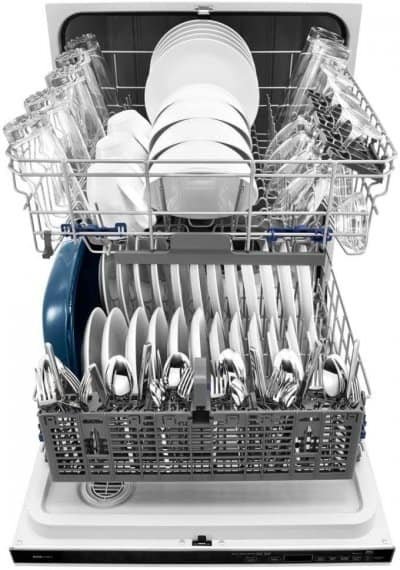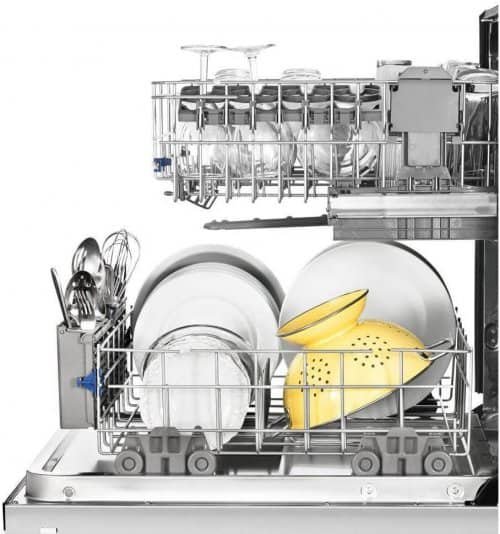Running a dishwasher can be a convenient and time-saving way to clean your dishes. However, if you’re concerned about efficiency and resource usage, you might wonder if it’s bad to run a dishwasher when it’s only half empty. In this article, we’ll explore the impact of running a dishwasher half empty, discuss factors to consider when using your dishwasher, and provide tips for optimizing its usage. By the end, you’ll have a better understanding of whether it’s beneficial or detrimental to run a dishwasher with fewer dishes.
Dishwashers have become an integral part of modern kitchens, offering a convenient and efficient solution to the chore of handwashing dishes. These appliances utilize a combination of water, detergent, and mechanical action to clean and sanitize your dishes. However, in terms of energy and water consumption, running a dishwasher with a smaller load may raise concerns about efficiency and sustainability.
Table of Contents
Understanding Dishwasher Efficiency
To comprehend the impact of running a dishwasher half empty, it’s essential to understand how dishwashers work and the resources they consume.
How dishwashers work?
Dishwashers follow a series of steps to clean your dishes effectively. First, water is heated to the desired temperature and sprayed onto the dishes, loosening food particles and stains. Then, detergent is introduced into the wash cycle to remove grease and grime. The dishes are rinsed with clean water to remove any remaining detergent residue. Finally, hot air is circulated to aid in drying the dishes.
Energy and water consumption
Dishwashers consume both energy and water during their operation. The amount of energy used depends on the dishwasher’s efficiency rating, the cycle selected, and any additional features or options. Water consumption is determined by factors such as the load size, cycle duration, and water pressure.

The Impact of Running a Dishwasher Half Empty
Running a dishwasher with fewer dishes than its full capacity can have several implications, including wasted resources and inefficient cleaning.
Wasted resources
When you run a dishwasher half empty, you’re essentially wasting water and energy. The dishwasher will still use the same amount of water and energy as it would for a full load, but the resources won’t be utilized optimally. This inefficiency can lead to higher utility bills and unnecessary environmental impact.
Inefficient cleaning
A dishwasher’s cleaning performance relies on the optimal distribution of water and detergent throughout the load. When the dishwasher is not fully loaded, dishes may not be positioned properly to receive adequate water spray and detergent coverage. This can result in subpar cleaning and the need for rewashing, which defeats the purpose of using a dishwasher.
Factors to Consider When Running a Dishwasher
To make an informed decision about running a dishwasher half empty, there are several factors you should consider.
Load size and capacity
Understanding your dishwasher’s load size and capacity is crucial. Most dishwashers have adjustable racks and tines to accommodate different dish sizes and shapes. It’s important to load the dishwasher efficiently, ensuring dishes are spaced apart and positioned appropriately to allow water and detergent to reach all surfaces.
Dishwashing cycle selection
Different dishwashing cycles serve various purposes, such as heavy-duty cleaning, delicate items, or energy-saving options. Choosing the right cycle for your load can enhance cleaning efficiency and minimize resource usage. Energy-saving or eco-friendly cycles are often designed to work effectively with smaller loads.
Energy-saving features
Many modern dishwashers come with energy-saving features such as soil sensors, delay start options, or half-load settings. Soil sensors detect the level of dirtiness and adjust the cycle accordingly, optimizing resource usage. Delay start allows you to schedule the dishwasher to run during off-peak hours, taking advantage of lower energy costs. Half-load settings adjust the water and energy consumption when running with a smaller load, reducing waste.
Tips for Optimizing Dishwasher Usage
If you decide to run your dishwasher half empty, there are several tips you can follow to optimize its usage and minimize resource waste.
Load dishes efficiently
When loading your dishwasher, ensure that dishes are positioned properly, avoiding overcrowding or stacking items that may block water and detergent access. Leave enough space between items for the water spray to reach all surfaces effectively.
Choose appropriate cycle settings
Selecting the correct cycle setting for your load is essential. Energy-saving or eco-friendly cycles are designed to operate efficiently with smaller loads. If your dishwasher has soil sensors, consider using them to maximize cleaning effectiveness while conserving resources.
Utilize energy-saving options
Take advantage of energy-saving features provided by your dishwasher. Delay start options can help you schedule cycles during off-peak hours, saving on electricity costs. If available, activate the half-load setting to adjust water and energy consumption accordingly.
Environmental and Economic Implications
Running a dishwasher half empty can have both environmental and economic implications that are worth considering.
Water conservation
By running your dishwasher only when it’s fully loaded, you can conserve water. Optimal load size ensures that the water used is effectively distributed among all the dishes, reducing waste. Conserving water contributes to the overall preservation of this valuable resource.
Energy savings
Using your dishwasher efficiently leads to energy savings. When the dishwasher operates with a full load, the energy consumed per dish cleaned is significantly lower than running it half empty. By minimizing energy waste, you contribute to a greener and more sustainable environment.
Cost considerations
Running a dishwasher half empty may result in increased utility bills. Since the dishwasher consumes the same amount of energy and water regardless of the load size, running it with fewer dishes leads to inefficiency. By running full loads, you can optimize resource usage and potentially save money on your energy and water bills.
Other Considerations for Dishwasher Usage
Apart from efficiency and resource usage, there are other factors to consider when using a dishwasher.
Time management
Running your dishwasher less frequently may require better time management. If you run the dishwasher only when it’s fully loaded, you’ll need to plan your mealtime routines accordingly. However, it can also offer the benefit of reduced overall time spent on dishwashing.
Hygiene and sanitation
A fully loaded dishwasher ensures that all dishes, utensils, and cookware are cleaned thoroughly, promoting better hygiene and sanitation. If you frequently run the dishwasher half empty, you may need to take extra precautions to ensure that dishes are thoroughly cleaned and sanitized.
Dishwasher maintenance
Regular maintenance is essential to keep your dishwasher in optimal working condition. Regardless of the load size, follow the manufacturer’s guidelines for cleaning filters, inspecting spray arms, and maintaining the dishwasher’s overall cleanliness. Proper maintenance will help prolong the lifespan of your appliance and ensure its efficient performance.
Will running a dishwasher half empty damage the appliance?
Running a dishwasher half empty won’t necessarily damage the appliance. However, it may lead to inefficient cleaning and resource wastage. It’s generally recommended to wait until the dishwasher is fully loaded before running a cycle.
Can I mix different types of dishes in one load?
Yes, you can mix different types of dishes in one load as long as they are dishwasher-safe. Ensure that items are properly positioned and spaced apart to allow effective water and detergent coverage.
Are there any benefits to running a dishwasher half empty?
Running a dishwasher half empty may offer some convenience in terms of time management and having clean dishes available. However, the environmental and economic benefits of running full loads outweigh the potential advantages of running a dishwasher half empty.
How can I save more energy when using my dishwasher?
To save energy when using your dishwasher, consider using energy-saving or eco-friendly cycles designed for smaller loads. Activate any energy-saving features your dishwasher offers, such as soil sensors or delay start options. Additionally, ensure that your dishwasher is properly maintained to maximize its energy efficiency.
Can I run a dishwasher overnight or while I’m away from home?
Running a dishwasher overnight or while you’re away from home can be safe and convenient, especially if your dishwasher has a delay start option. However, it’s important to consider the noise level of your dishwasher and follow safety guidelines provided by the manufacturer.
Conclusion
In conclusion, running a dishwasher half empty is generally not recommended due to its inefficient resource usage and potentially subpar cleaning results. It’s more environmentally and economically beneficial to wait until your dishwasher is fully loaded before running a cycle. By optimizing your dishwasher usage, you can conserve water, save energy, and reduce your utility costs while enjoying clean and sanitized dishes.

